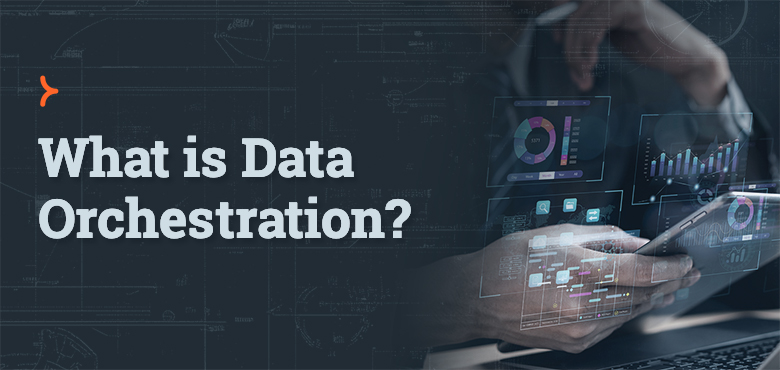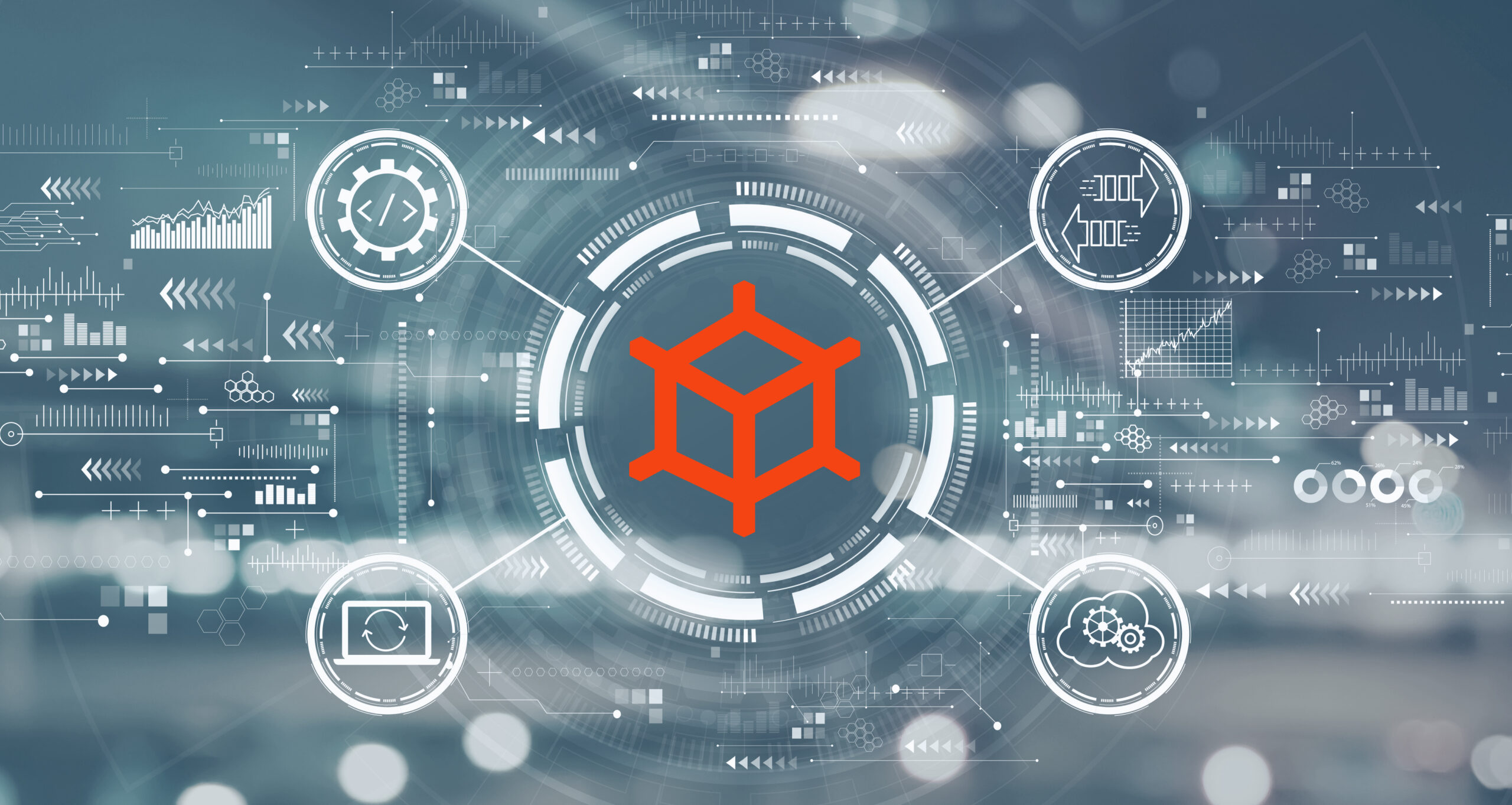Businesses are constantly generating data across different platforms, from customer data in CRM systems to financial records in ERP systems. As they grow, managing and making sense of this data becomes an increasingly complex task.
This is where data orchestration comes in. Data orchestration is the process of automating the movement, transformation and organization of data across different systems to ensure that the right data is available at the right time.
Orchestration platforms like Jitterbit Harmony exist to streamline and automate these processes so that businesses can get the most out of their data with the least amount of manual effort. How does data orchestration work, and how do platforms like Harmony make orchestration more efficient and scalable?
What is orchestration?
Orchestration is the coordinated management of tasks or processes to achieve a specific outcome. Whether it’s managing IT infrastructure, cloud environments or business processes, the goals of orchestration are the same — to streamline operations, eliminate bottlenecks and improve efficiency.
Put simply, orchestration is how things get done, ensuring that different components work together smoothly. An orchestration platform provides the means to implement that process effectively.
Orchestration Layers
An orchestration layer is one part of a larger workflow that organizes and manages specific tasks or processes. Each layer handles a specific function, such as data management, task execution or system communication — but they all work together to automate and streamline the entire workflow.
For example, in an orchestration platform, one layer might be responsible for collecting raw data from different sources, while another layer transforms that data into a usable format. A third layer then delivers that data to the right application or system. By breaking complex workflows into layers, businesses can make sure that each part of the process happens in the right order and without errors.
What is data orchestration?
Data orchestration is the process of automating the movement, transformation and management of data across various systems and platforms to break down data silos, enhance data accessibility and reduce the risk of manual error.
Data Orchestration vs. ETL
While data orchestration and ETL (Extract, Transform, Load) both deal with moving and integrating data, they approach data management in different ways.
- ETL is a traditional process that involves extracting data from various sources, transforming it into a suitable format and loading it into a centralized database for analysis. While this approach effectively consolidates data, it can be somewhat rigid and time-consuming, often resulting in delays when organizations need real-time insights.
- Data orchestration is more agile, automating and coordinating workflows across multiple systems in real time, not only moving data but also integrating it and making it accessible wherever and whenever needed.
While data orchestration has distinct advantages over ETL, they often work together to create a comprehensive data strategy. ETL provides a solid foundation for consolidating and storing large data volumes, and the agility of data orchestration complements this by automating the movement of data between ETL processes and other systems.
How does data orchestration work?
Data orchestration processes can be broken down into three key phases: organization, transformation and activation.
Phase 1: Organization
In the organization phase, data is collected and integrated from various sources. This includes databases, cloud services, APIs and other data repositories. During this phase, the focus is on identifying the relevant data sets, ensuring they are connected properly and establishing a framework for how the data will be organized.
Phase 2: Transformation
Once the data is organized, the next step is transformation. The data is “transformed,” or refined, to meet specific requirements or business needs. This process might involve:
- Data Cleaning: Removing duplicate data and correcting inaccuracies.
- Data Enrichment: Adding additional information or context to the data.
- Data Formatting: Converting data into a standardized format to ensure compatibility across systems.
Transformation ensures that the data is not only accurate, but also structured in a way that makes it usable for analysis and decision-making.
Phase 3: Activation
The final phase is activation, where the transformed data is delivered to the right application or user at the right time. Examples of data activation include sending data to analytics platforms, feeding it into business intelligence tools or dashboards, or integrating it into operational workflows.
Together, all three phases of data orchestration — organization, transformation, and activation — work in concert to enable informed decision-making and more efficient operations.
Benefits of a Data Orchestration Platform
To fully realize the benefits of data orchestration, businesses can leverage a data orchestration platform. Jitterbit’s orchestration platform, Harmony, offers a powerful range of tools to integrate data between applications (iPaaS), manage and deploy APIs (API Manager), create custom applications (App Builder), and more. With the right platform, businesses can move beyond basic data management and tap into the following benefits of enhanced data orchestration:
Data Accessibility
A data orchestration platform centralizes data from multiple sources, making it easily accessible to users across the organization. This eliminates data silos and ensures that teams have the information they need to make informed decisions.
Data Quality
By automating different orchestration layers, an orchestration platform reduces the risk of human error and improves data consistency. Through automation, businesses can also access data in real time, resulting in faster, more informed decision-making.
Operational Efficiency
Automating data movement and processing reduces the need to handle data manually, freeing up operational resources and allowing teams to focus on more strategic tasks. By providing a unified view of data across different systems, a data orchestration platform also improves efficiency by making it easier for departments to collaborate.
Scalability
As organizations grow, their data needs evolve. A data orchestration platform can easily scale to accommodate increasing data volumes and complexity, ensuring that data management processes remain effective without extensive restructuring.
Compliance
Data orchestration platforms can help organizations meet regulatory compliance requirements through automated data tracking, auditing and report generation. This creates a clear and auditable data trail organizations can use to avoid potential fines or legal issues.
Examples of Data Orchestration
Data orchestration can be applied across various industries. Here are a few practical examples:
- Marketing: Data orchestration can be used to integrate data from multiple channels, such as email, social media and CRM systems, allowing businesses to gain a deeper understanding of their customers and create more personalized marketing campaigns.
- Finance: By automating data collection from transaction databases, compliance systems and market feeds, orchestration helps finance teams generate timely reports, reduce errors and improve compliance.
- Supply Chain Management: In supply chain operations, data orchestration helps coordinate data from suppliers, inventory management systems and logistics partners. For example, as new inventory arrives at a warehouse, data orchestration can automatically update inventory levels, notify relevant stakeholders and adjust purchasing orders based on real-time stock levels.
- Healthcare: Healthcare organizations can use data orchestration to integrate patient data from electronic health records (EHRs), lab systems and imaging devices. This integration enables healthcare providers to have a comprehensive view of patient data, improving decision-making and patient outcomes.
Data Orchestration Challenges
Transitioning from isolated data silos to a unified, orchestrated system is no small feat. Organizations face a range of technical and organizational hurdles as they strive for end-to-end automation, and IT leaders are often on the front lines.
Jitterbit surveyed 1,000 enterprise IT decision makers at the director level and above to better understand what barriers they face when it comes to data orchestration, and our poll found that these were five most common challenges:
- Security and compliance concerns (47%) remain top of mind, especially as data flows across increasingly complex systems and environments.
- Legacy system integration (40%) is a significant hurdle, particularly in large enterprises with decades-old infrastructure.
- Process automation complexity (40%) presents another key challenge, highlighting the intricacies involved in mapping and automating cross-functional workflows.
- Scalability (37%) limitations slow down orchestration efforts, especially as data volumes and business requirements grow.
- Shortage of skilled expertise (31%) underscores the talent gap in the automation and integration space.
👉Download the Full 2025 Automation Benchmark Report to learn more about how IT leaders are overcoming resource constraints, tackling security challenges, and adopting AI for seamless orchestration.
Trends Impacting Data Orchestration
It goes without saying that AI is the biggest trend impacting the technology landscape right now, and data orchestration is no exception.
But as Jitterbit CEO Bill Conner points out: “The future of application development, orchestration and automation is based on an AI evolution, not a revolution.”
That distinction matters—especially in the context of orchestration. Organizations aren’t ripping out legacy systems or replacing every workflow overnight. Instead, they’re enhancing orchestration with AI to make it smarter, more adaptive, and more accessible across the business.
In our report, “Automation, Orchestration & Your AI Transformation”, we explore the following AI trends impacting data orchestration:
- AI Assistants: Through machine learning, AI assistants like Jitterbit’s Connector Builder automate orchestration-related tasks.
- Natural Language Processing (NLP): Traditionally, data orchestration has been confined to IT and developer teams, but NLP is helping to remove technical barriers and make orchestration tools more collaborative across the organization.
- OpenAI Connectors: By integrating OpenAI with existing platforms, businesses can add intelligence to the flow of data across systems.
Orchestrate and Automate Workflows with Jitterbit Harmony
Orchestration is so much more than a tech buzzword — it’s the key that provides access to important insights from various data sources, enabling businesses to make informed decisions and respond swiftly to changing market conditions.
Jitterbit’s AI-infused orchestration platform, Jitterbit Harmony, helps businesses leverage their data effectively and stay competitive by connecting applications, syncing data across platforms and automating workflows.
Discover how Jitterbit Harmony can address your unique business challenges. Contact our data orchestration experts to get started!



